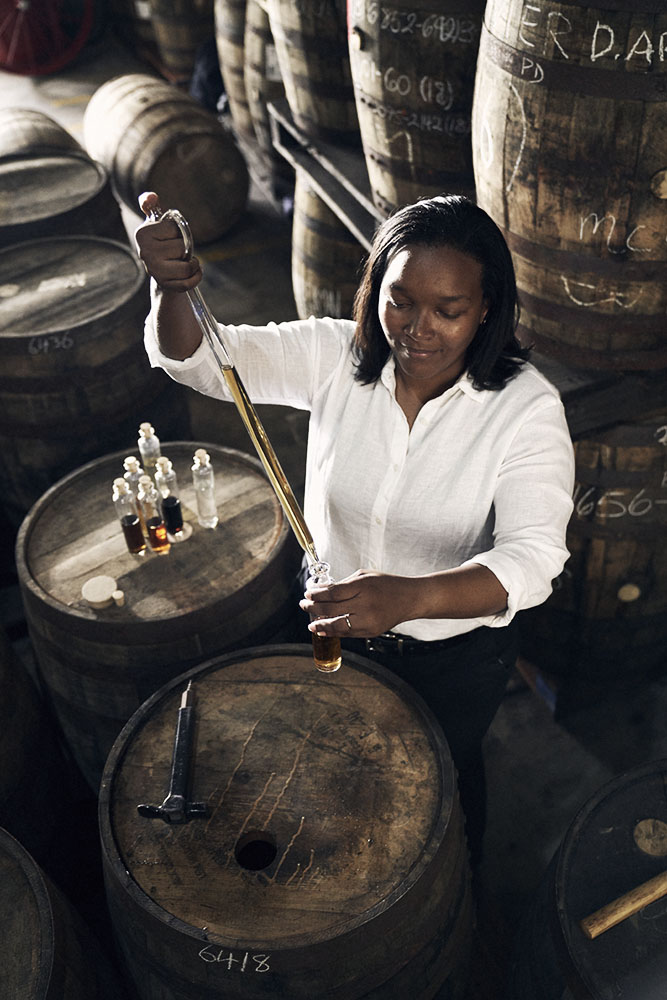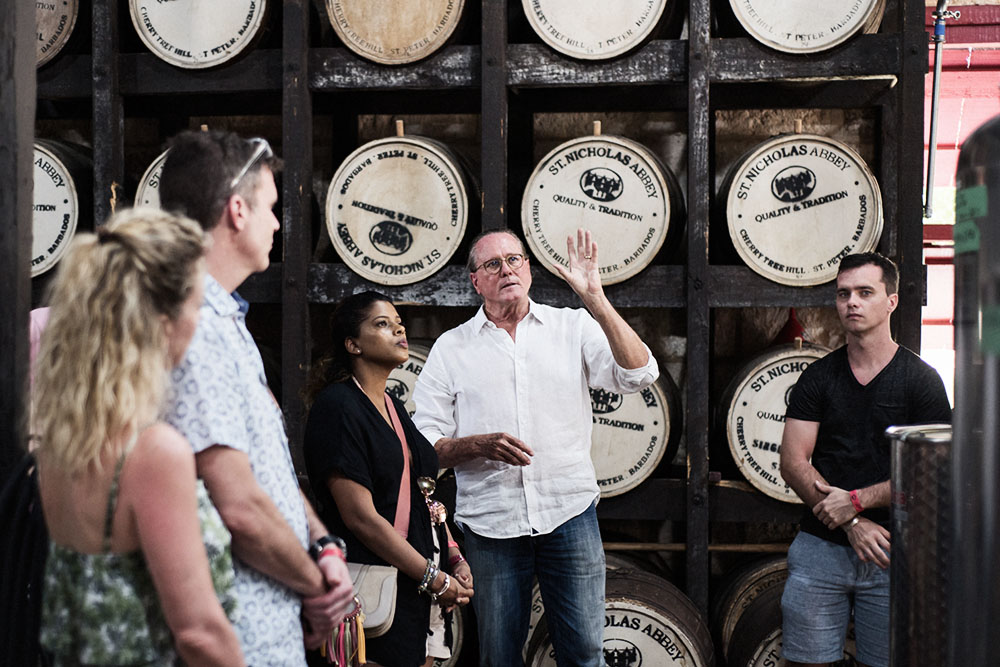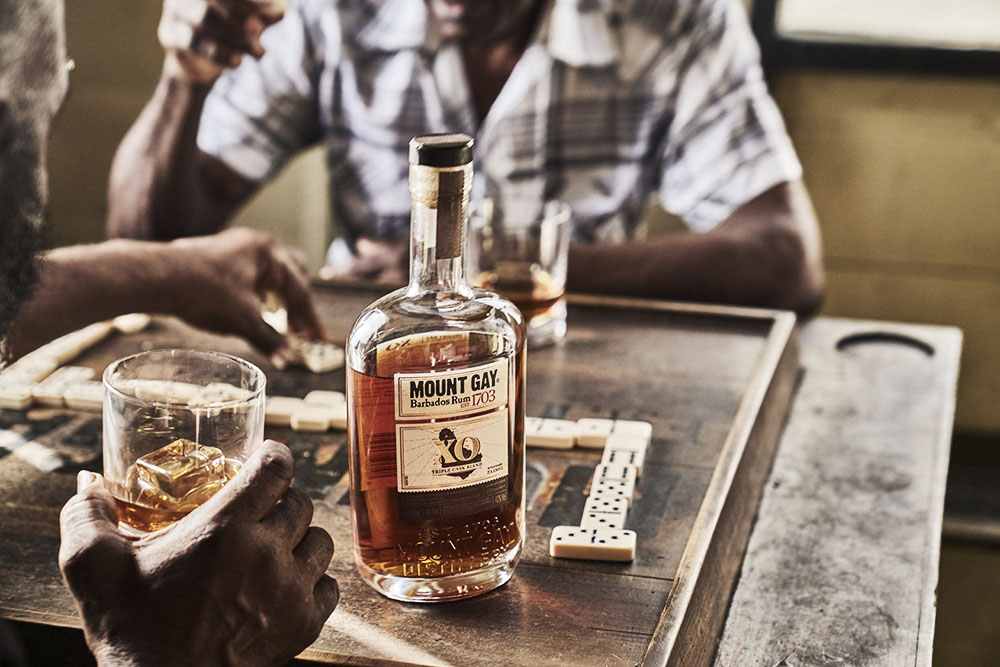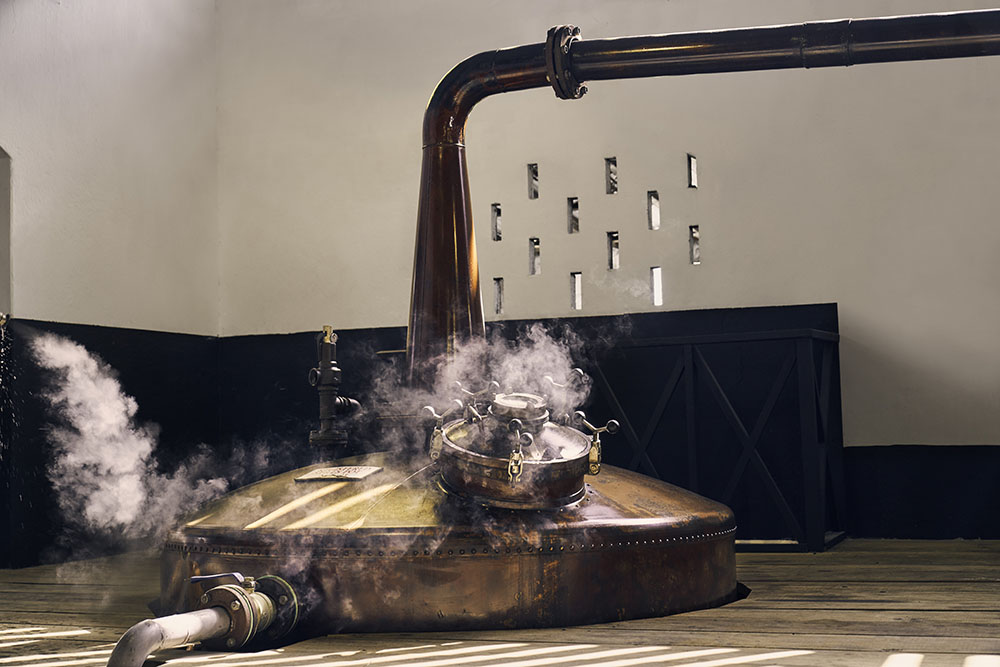I had to do it. Okay, I didn’t have to do it. But every now and again, an opportunity presents itself that compels one to act, despite the fact that the more “refined” part of the brain is leaning otherwise. I’m not big on photos of myself. I don’t believe I’ve ever taken a selfie. So suggesting to a complete female stranger that she have her picture taken with me was not a proposition I was entering into lightly. I actually had to ask the fellow beside me (who just happened to be a professional photographer) to not only take the shot, but also to ask the focus of my attention to concede to be photographed with me. Not even a few rum cocktails could quell my nervousness. “No problem,” he responded cheerfully. “I do this all the time!”
The photo of me and Miss Universe Barbados is one I’ve subjected many (read, all) of my male friends to. I just wanted to show them the sorts of distracting hazards I’m often faced with while doing “research” for stories. I typically knock off the “It’s a tough job but …” schtick at about the same time I’m met with their stony finish-that-line-and-you-die glares.
There are (far) worse places to be in late October (2019) than Barbados, at the official residence of the Prime Minister of the island, where I am on this sweltering tropical evening. Cooling myself with various rum-based drinks, and savouring a range of gourmet delicacies prepared by a bevy of talented chefs, I’m thinking that it’s too bad it’s my last night here. This event, dubbed “Epicure: An Evening of Elegance,” wraps up my experiences at Barbados’ 10th annual Food and Rum Festival.
Over the course of five gloriously warm and sunny days, I’ve been immersed (with no protest whatsoever) in an unparalleled gustatory onslaught. Yes, the island’s beaches, warm waters, friendly people and outstanding choices of accommodation (I’ve been staying at the amazing Ocean Two Resort — experiencing all the aforementioned pleasures) are what typically draw people here, but for the gourmand, there are also some serious culinary adventures to be had.
Try dinner on the beach at the funky/chic La Cabane, where fresh local ingredients are combined with live drumming (and maybe even a fire eater) for a deliciously entertaining experience. Want to try some of the freshest fish and seafood on the planet? Check out the Oistins Fish Fry, where locals and visitors gather to rub elbows and indulge in succulent swimming things like the whole grilled red snapper I devoured on my second night out.
Looking for something more upscale? Consider Hugo’s Restaurant, one of the island’s newer oceanside temples of taste. Locally caught, pan-seared barracuda is but one of the dishes you probably won’t experience in Canada. Or just hit up some of the many food trucks and local haunts, like The Village Bar, for some more traditional Bajan bites.
Also, be sure to check out some of the “rum shops” that are everywhere on the island. Though referred to as “shops,” they are essentially bars that range from tiny huts to more sizeable establishments. The drill is simple: pick your rum, pick your mix, pick your seat and pick up a conversation or a game of dominos.
While distillates derived from sugar cane may have evolved in other places earlier in history, Barbados is generally given the nod as the birthplace of rum. There’s a ton of information out there on the history and growth of the Barbados rum industry for anyone with an internet connection. It’s a fascinating — and at times, pretty convoluted — story. My interest in the distillers of Barbados rum was more focused on the present day:
Who are the players?
What makes them unique?
What challenges are they facing, and what are they doing to address them?

Currently, there are four operational rum distilleries on the island. The one likely most recognized by Canadians — and perhaps by the rest of the world as well — is Mount Gay. Founded in 1703, it’s the world’s oldest rum distillery (or at least the one with documentation going back far enough to trace its lineage). There is also the Foursquare Rum Distillery, St. Nicholas Abbey and West Indies Rum Distillery Ltd, the island’s largest distillery. Mount Gay and St. Nicholas Abbey produce rums under their own respective names, while Foursquare and West Indies distill a range of brands, including the former’s Doorly’s and Old Brigand, and the latter’s Plantation Rum and Cockspur labels.
I had the opportunity to talk to representatives from all of these distilleries (well, almost, but we’ll get to that) to find out what makes Barbados rum unique. First, though, a bit of a generalized comment on the style of Barbados rum.
Most of what you come across when trying to nail down what the “Barbados rum style” is all about suggests that it is not as “heavy” as, say, 100 percent pot still rum from Jamaica, not as earthy as sugar cane juice agricoles, and not as light as the style of brands like Bacardí or Havana Club. Well, okay, I guess. The Barbados rums I’ve enjoyed typically have a certain “finesse” to them. However, this isn’t to suggest that they are not without power. A lot depends on the type of stills used (pot or column) and, of course, the final style the master distiller is hoping to achieve (not to mention barrel types, aging time, etc.). Perhaps a comment from someone who actually uses Barbados rum as a component in its company’s rum blends might be able to sum things up.
Grisa Soba, co-founder of Flaviar, whose company blends the Larga Vida brand states that “the pot-still-distilled Barbados rum adds some serious whisky quality to the character of Larga Vida. If Jamaican rum contributes funk, fun and reggae to the blend, then Barbados is adding depth, balance and some grown-up seriousness that can be recognized in flavour notes such as oak and cinnamon.”
In any case, one of Foursquare’s pot-distilled, cask strength numbers isn’t going to have a whole lot in common with Mount Gay Eclipse Silver. And the cane syrup-based spirits from St. Nicholas Abbey will have a different profile than both of them. If there’s anything that all the island’s rums share, it is their basic raw ingredients: cane sugar (in whatever form) and local water (and yeast, of course, but I see that as more of a catalyst than an ingredient).
As in the production of any fine spirit, crafting top-quality rum requires an untainted water source. This presents no issues for the island’s distilleries. The fact that Barbados’ substrate is coral limestone rather than volcanic rock makes for exceptionally pure local water.
“One of the things that makes our rum most unique is our water,” explains Raphäel Grisoni, Managing Director of Mount Gay. “Barbados water is coral-filtered and we’ve been using the same well since the distillery was founded in 1703. Our original artisanal well carries its own unique minerals that create the ideal environment for our proprietary yeasts and molasses during fermentation.”
“Barbados is famous for its water from underground limestone aquifers,” Richard Seale, Master Distiller at Foursquare confirms, adding that his distillery “is located on one of best on the Island.”
The Caribbean is world famous for its sugar cane fields, making the other main spirit ingredient — fermentable sugar — pretty easy to come by. At St. Nicholas Abbey, a supply of cane sugar is literally right outside the distillery doors. “We are proud to say that we grow our own cane, and more specifically, our own varieties, which historically were used within the sugar cane industry but due to mechanization are no longer grown,” reveals the distillery’s Larry Warren, whose family purchased the estate, including its sugar cane fields, in 2006. “The sugar cane we cultivate is a high-sucrose, low-fibre variety known as B80689. The ‘B’ is for Barbados as we still have a very well-established sugar cane breeding station that is world renowned.”
Seale at Foursquare also counts on the fields of St. Nicholas Abbey to provide him with cane juice. He also uses locally produced and imported molasses, while Mount Gay sources molasses from Barbados as well as other Caribbean locations. The reason for this is specific, not just necessary.
“Local Barbadian molasses tend to have a higher sugar content, and our soils are also alkaline, which brings acidity to the cane and imparts flavour in the molasses,” notes Grisoni. “Our Caribbean molasses contain different minerals, so the ability to use the two [types] gives a great balance. We are very strict with how we work with our molasses, which is why we use a specific molasses for pot still distillation and another for column. The results yield a low level of sweetness and a persistence of flavour.”
However, there is a “necessary” issue as well. Producers like Mount Gay may be facing some future challenges given the state of molasses production.
“Today, molasses in no longer available in stable qualities,” informs Warren who, as mentioned, doesn’t use molasses for the St. Nicholas Abbey rums. “This trend will continue as sugar factories become more efficient and modernized.” Obviously, this could be a problem for molasses-based rum producers in general, and specifically those looking to use locally sourced molasses.
In a very detailed 2017 paper entitled “Barbados in the Rum Global Value Chain,” (my copy flagged “final draft for review”), authors Danny Hamrick and Karina Fernandez-Stark of Duke University’s Global Value Chains Center note that the “decline of bulk sugar production in the country threatens molasses supply,” and that this “weakness” in turn, leads to the “threat” of decreased molasses production (“threats” and “weaknesses” combining with “strengths” and “opportunities” in their Barbados rum industry SWOT analysis … for those of you who didn’t go to business/marketing/acronym school).
The simple solution to a lack of local molasses would be to simply import more from other neighbouring islands. Yet if molasses production is declining throughout the Caribbean, this isn’t going to make for a long-term solution. Besides, if local molasses is unique due to its composition, using stuff from Guatemala (let’s say) is certainly not going to help preserve the “Barbados style” (as diverse as it may be). Which brings us to another area the Duke study focused on: building the Barbados rum “brand.”
The study wasn’t referring to the respective “brands” from specific distilleries (e.g., Mount Gay Eclipse or Foursquare’s Doorly’s), but rather how consumers “relate” to the concept of “Barbados rum.” What emotional connection does the term illicit? The study argues that the Barbados rum industry — and the sugar production industry, for that matter — is disconnected, that producers are not really working together, and that the sugar industry is not overly involved in (or concerned about) the island’s rum production.
Granted, I may be misinterpreting the study’s interpretation of the industry. And I may be suggesting things about the relationship among suppliers that don’t reflect reality. But humour me a bit, and let me play along with these possible realities.
I’m assuming the Barbados rum industry wants to continue to grow and evolve. If so, a reliable supply of molasses will be required. St. Nicholas Abbey may, to an extent, be exempt from the effects of a potential reduction in molasses availability, but not so with the bigger players.
If “historical legacy” and “authenticity” are, as the Duke study suggests, important “branding elements” for Barbados rum, and molasses plays an important role in both the history and authenticity of Barbados rum, then maybe the importance of local molasses needs to be further recognized and its production encouraged. I’m just throwing this out there (and I’m sure the Seales, Warrens and Grisonis, should they be reading this, are collectively thinking, “Well, duh!”), but rather than being seen as a by-product of sugar production, maybe molasses needs to be seen as a valuable product in its own right.
Of course, the other factor at play is that the historical legacy and authenticity mentioned earlier needs to be preserved. This appears to be happening. Sort of.
Three of the island’s four distilleries — Foursquare, Mount Gay and St. Nicholas Abbey — have agreed on the adoption of a Geographical Indication (GI) that would, among other things, require the production and aging of a spirit labelled “Barbados rum” to take place in Barbados. (Interestingly, the press release I received made no mention of using only Barbados sugar cane products.) You’ll notice I said three of the island’s four distilleries have agreed on the statutes of the GI; West Indies Rum Distillery has not. In fact, according to the release, the group has lodged an appeal to overturn the implementation of the GI.
The issue here is that some of the rums produced by this distillery are partially aged in Barbados, then shipped to France for final maturation (the distillery’s parent company is Cognac’s Maison Ferrand). This practice would violate one of the conditions of the GI. The press release also states that the rums of West Indies Rum Distillery are sweetened with the addition of sugar syrup, also a no-no under the GI rules. As I prepare to file this story, I am still awaiting a response from Maison Ferrand’s Alexandre Gabriel to hear his company’s side of the story. (In fact, I did receive one. Read it here.)
In the meantime, if a united front of distilleries is one of the conditions identified by the Duke researchers as necessary for ongoing growth and success of the Barbados rum industry, the apparent rift between West Indies Rum Distillery and the rest of the group could be problematic. Or not. West Indies can do what it wants to do, but some of its rums may have to be labelled products of France rather than of Barbados. Personally, I’m not sure how the desires of one distillery can detract from the valid (I think) wishes of the other three. But politics being what it is, you never know. West Indies is, it should be noted, the largest distiller on the island.
In any case, pour yourself a few shots of Barbados rum and stay tuned; interesting times appear to be ahead.



